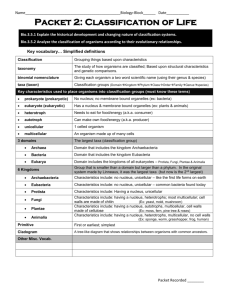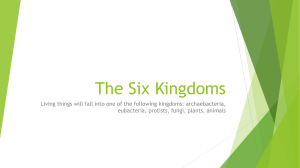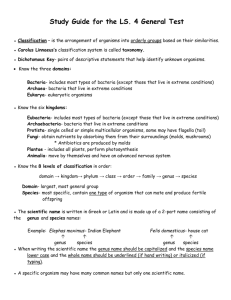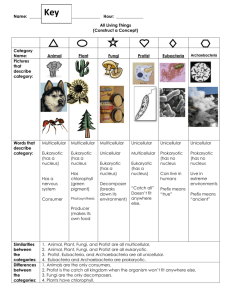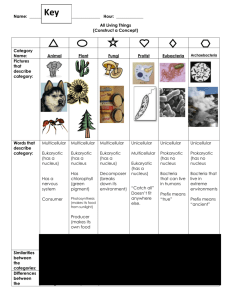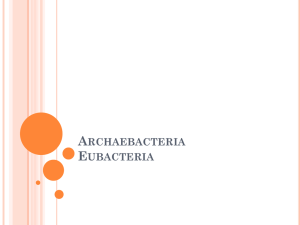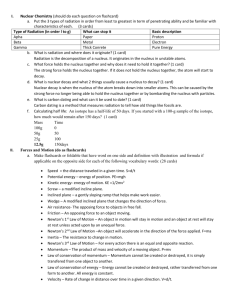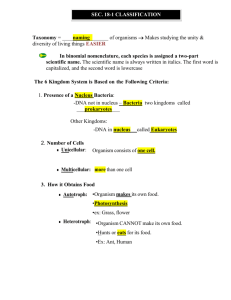6 Kingdom Foldable
advertisement
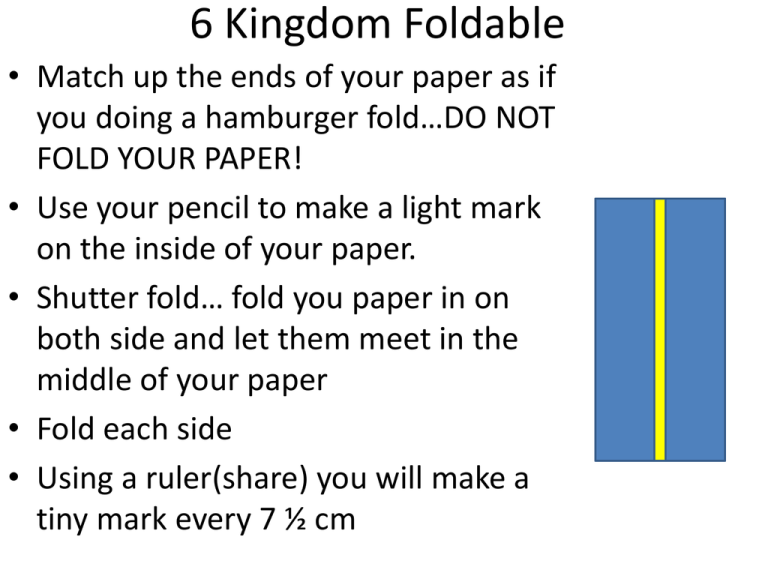
6 Kingdom Foldable • Match up the ends of your paper as if you doing a hamburger fold…DO NOT FOLD YOUR PAPER! • Use your pencil to make a light mark on the inside of your paper. • Shutter fold… fold you paper in on both side and let them meet in the middle of your paper • Fold each side • Using a ruler(share) you will make a tiny mark every 7 ½ cm • Draw lines across your shutters where you made your marks at every 7 ½ cm. • On the inside draw a line down the middle of your paper. This will give you an idea on the space you will have for your information. • You will then cut the lines on the shutters, but be sure not to cut the back side of your foldable( this will give you three tabs on each side of your foldable). On each tab, at the top, you will write each kingdom on the tabs shown ARCHAEBACTERIA EUBACTERIA PROTISTA FUNGI PLANTAE ANIMALIA Archaebacteria • Cell Structure: Prokaryotic-no nucleus • Cells: unicellular • Characteristics: live in harsh environments, old bacteria • Example: Pyrococcus furiasus Eubacteria – “true bacteria” • Cell Structure: Prokaryotic-no nucleus • Cells: unicellular • Characteristics: common bacteria, new bacteria • Example: E. coli Protista • Cell Structure: Eukaryotic-has a nucleus • Cells: unicellular or multicellular • Characteristics: very different, includes algae • Example: paramecium or amoeba Fungi • Cell Structure: Eukaryotic-has a nucleus • Cells: unicellular or multicellular • Characteristics: release enzymes to digest food • Example: mushroom Plantae • Cell Structure: Eukaryotic-has a nucleus • Cells: multicellular • Characteristics: has a cell wall and chloroplast • Example: fern Animalia •Cell Structure: Eukaryotic-has a nucleus •Cells: multicellular •Characteristics: variety •Example: kangaroo • Now underneath the name of the kingdom on the outside of your foldable you can draw a picture of the organism that is in that kingdom. ecoli Paramecium Pyrococcus furiosus
